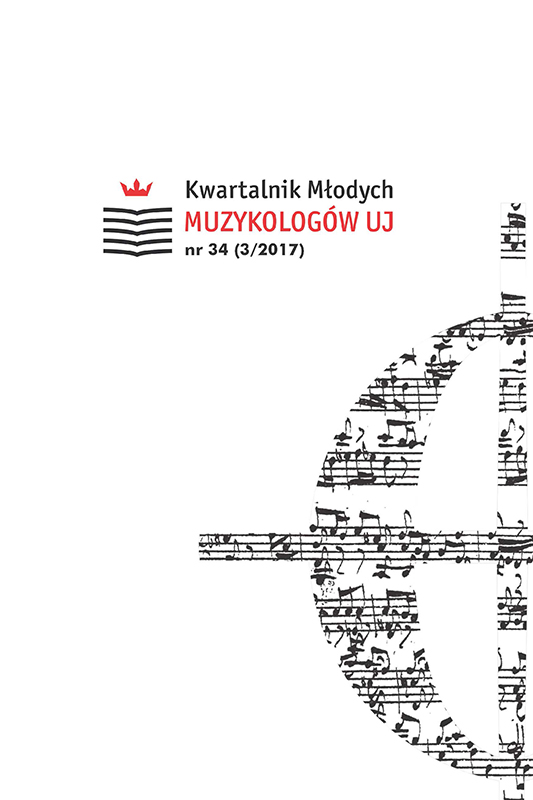The Modification of the Genre of Mystery Play in the Wagner’s, Schoenberg’s and Messiaen’s Compositions
The Modification of the Genre of Mystery Play in the Wagner’s, Schoenberg’s and Messiaen’s Compositions
Author(s): Nana KatsiaSubject(s): History, Fine Arts / Performing Arts, Music, Sociology, Middle Ages, Modern Age, Recent History (1900 till today), Sociology of Art, History of Religion, History of Art
Published by: Koło Naukowe Studentów Muzykologii UJ
Keywords: mystery; social context; musical dramaturgy; Arnold Schoenberg; Richard Wagner;Olivier Messiaen; 20th century music;
Summary/Abstract: The purpose of my paper is to reveal the main features of the mystery genre in the European musical culture of the 19th and the 20th century on the basis of the genre features established in the Antiquity and the Middle Ages.The mystery play genre, as we know, in essence means the firm unity of certain stable features. The complexity of those features consists of two specific elements—religion and social, and a general one—the model of the world for a certain epoch.If in the mysteries of Ancient civilizations and the Middle Ages, the aforementioned components operated as a firm unity of inseparable elements; later, in the period after the “new times”, especially at the end of the 19th century and in the 20th century, the stable elements were disintegrated from each other. This process is discussed on the examples of the following operas:• The common religion and ethical model—Wagner’s Parsifal;• The code of moral rules and principles in the social context—Schoenberg’s Moses und Aron;• The explication of Thomistic ideas in the modern world—Messiaen’s Saint François d’Assise.What is outlined is the unity of necessary components of the genre of the mystery play: multidimensional sources of libretto; a mission of the main hero; the author’s interpretation of the mystery; the abundance of ritual scenes; the relationship between the internal and externaldramaturgical processes; synthesis of the different theatrical genres; static dramaturgy. All of these features suggest a specific type of musical main mystic spheres: divine, terrestrial and demonic. Consequently, the dramaturgy of opera staging has three levels of activity: superficial, inner and upon time.
Journal: Kwartalnik Młodych Muzykologów UJ
- Issue Year: 2017
- Issue No: 03 (34)
- Page Range: 97-113
- Page Count: 17
- Language: English

